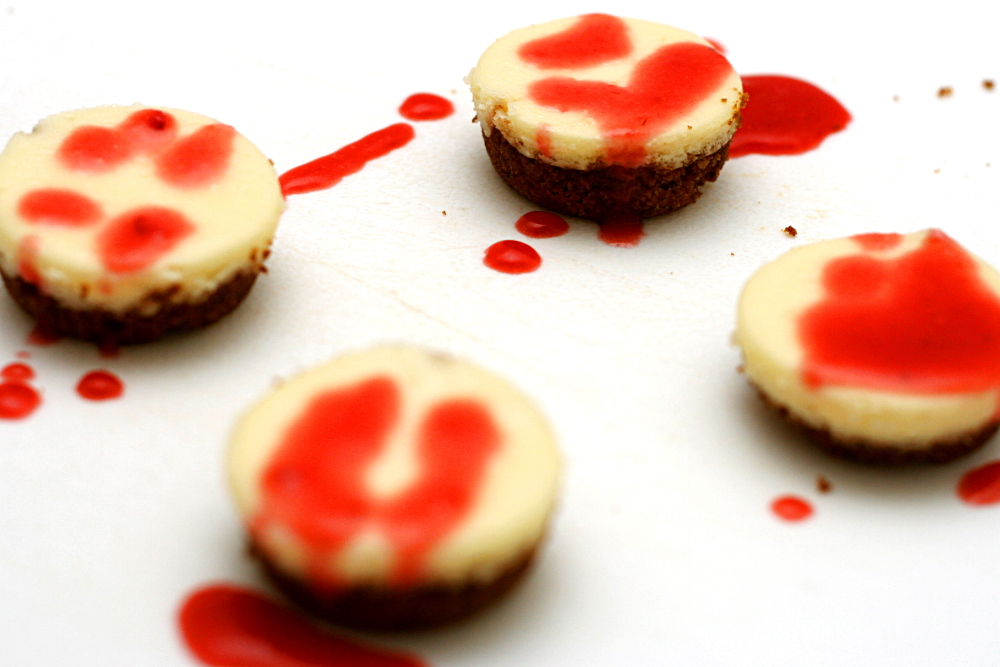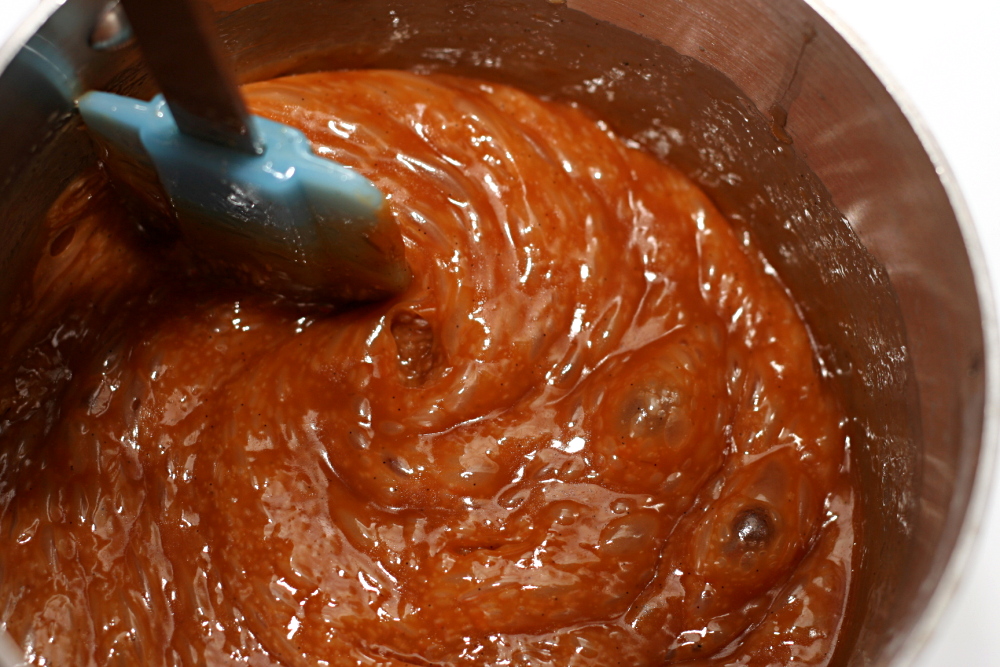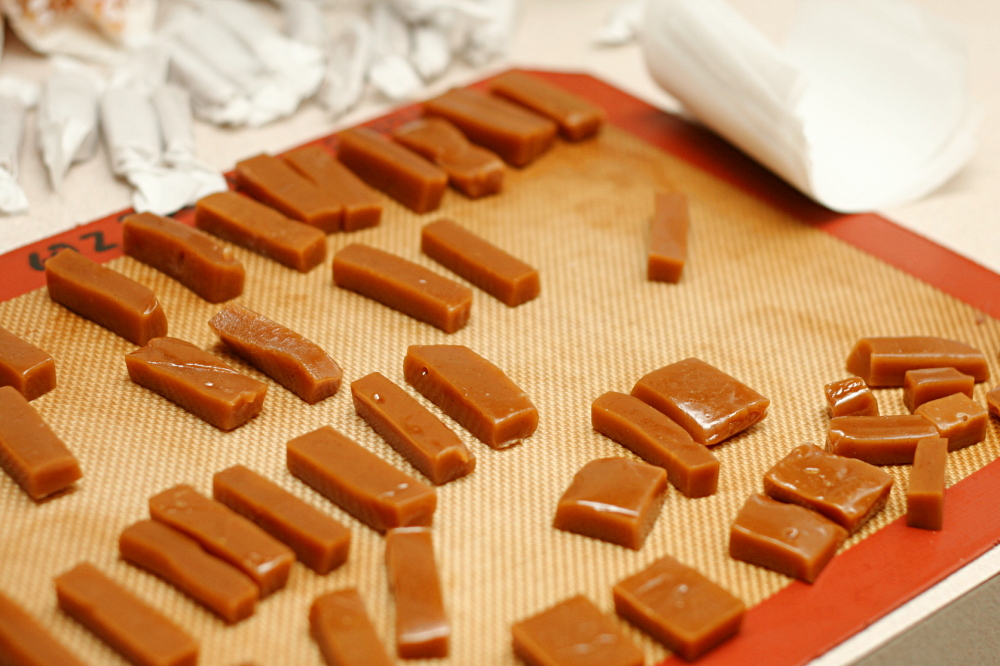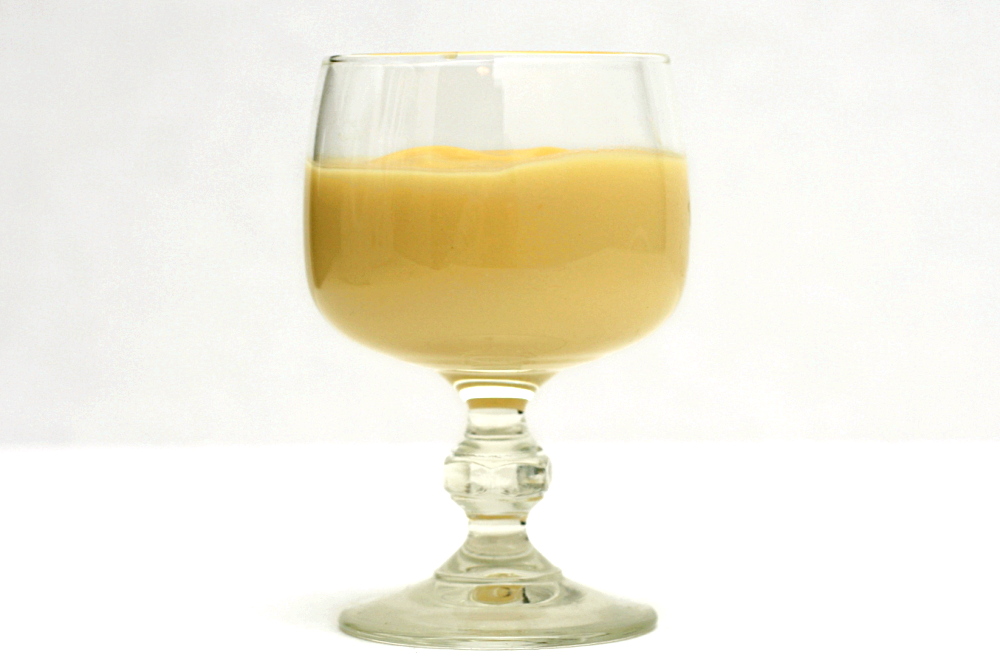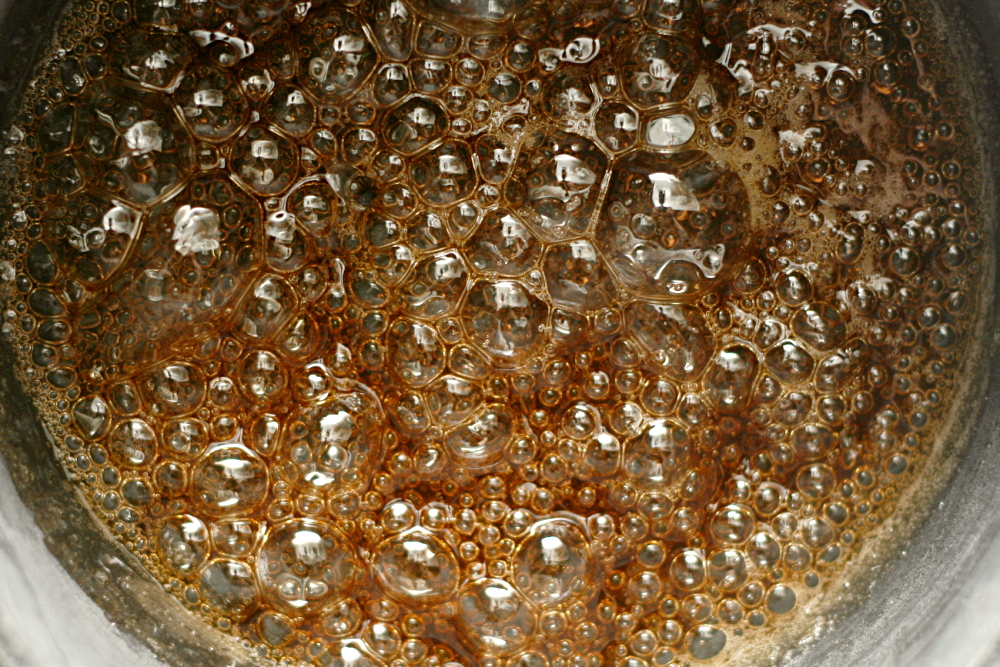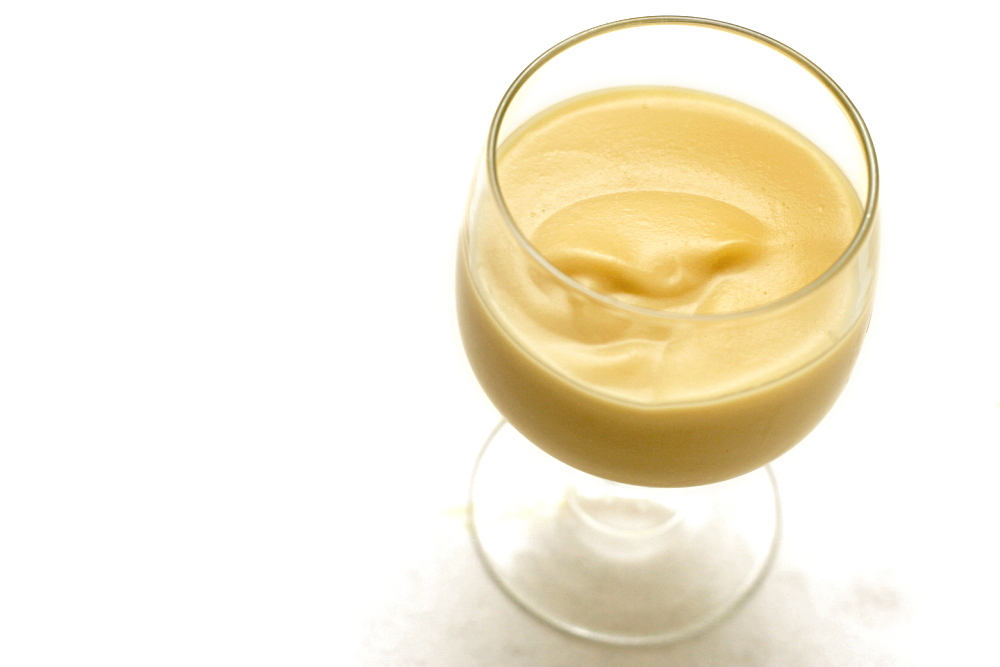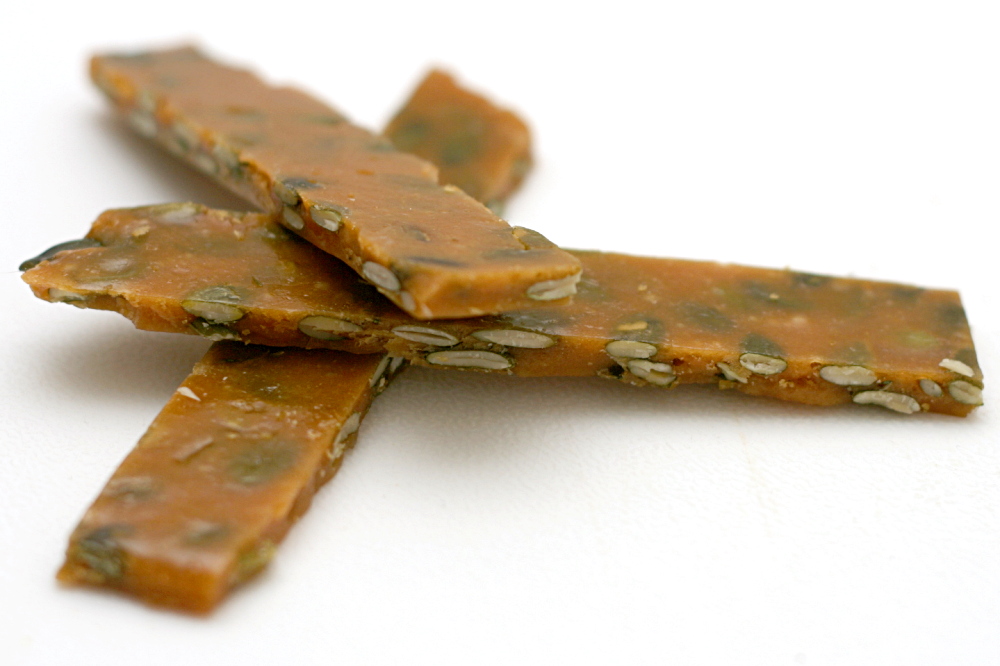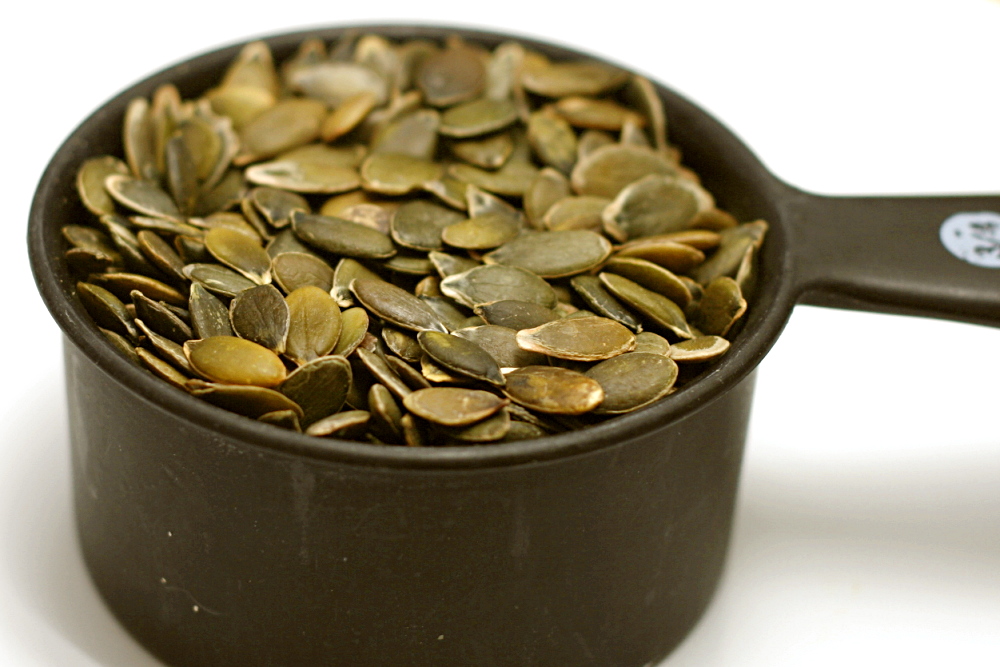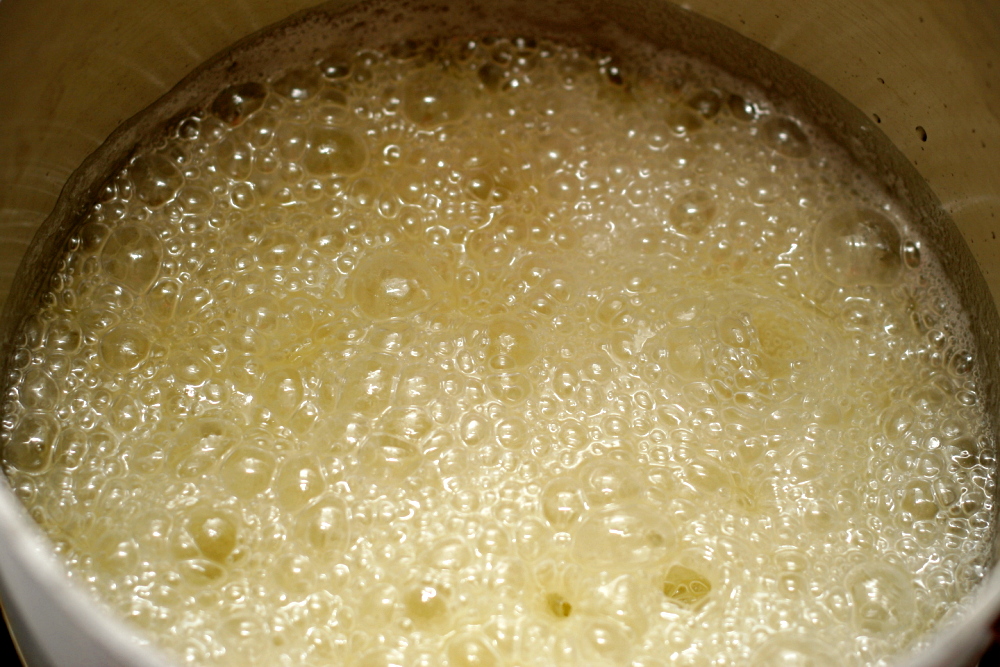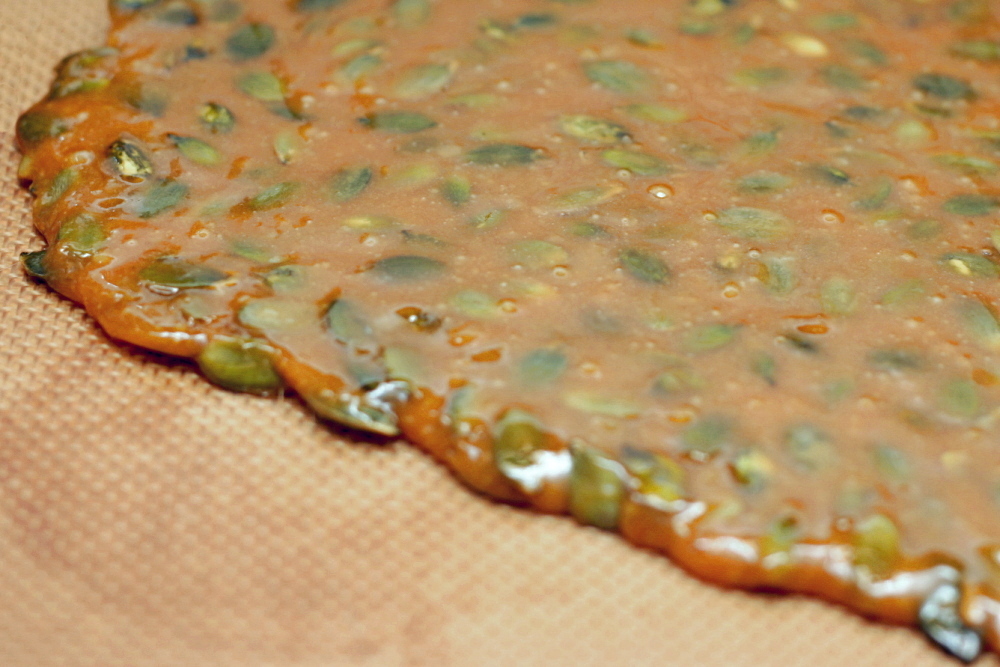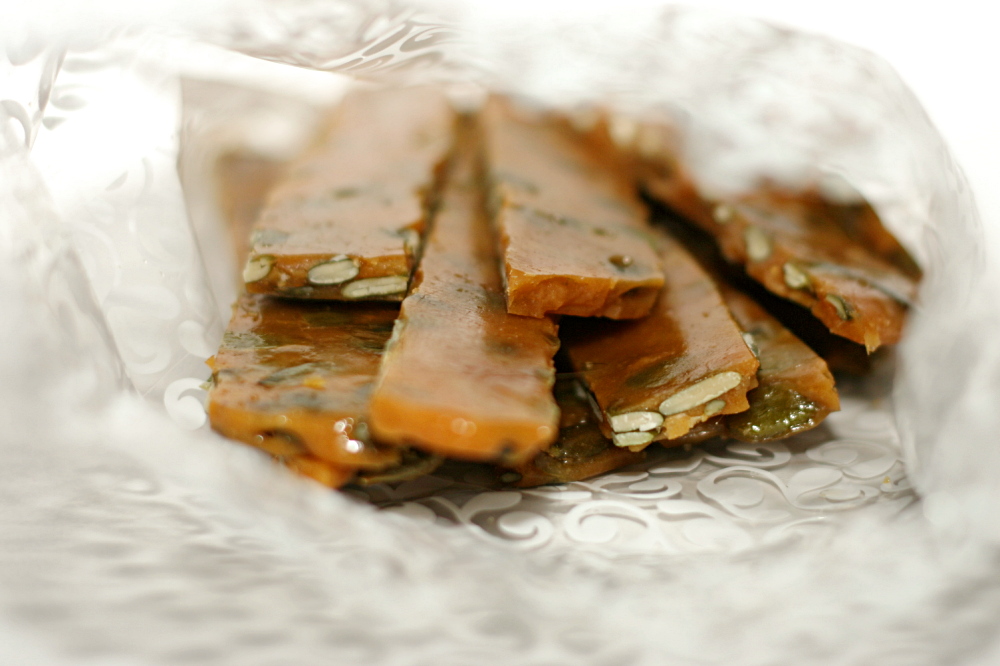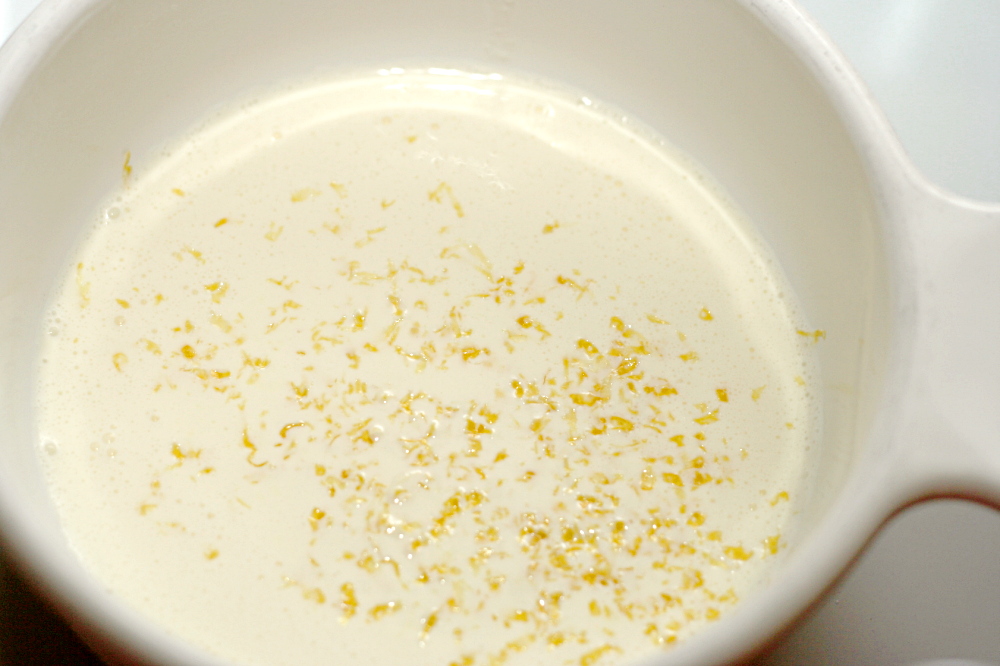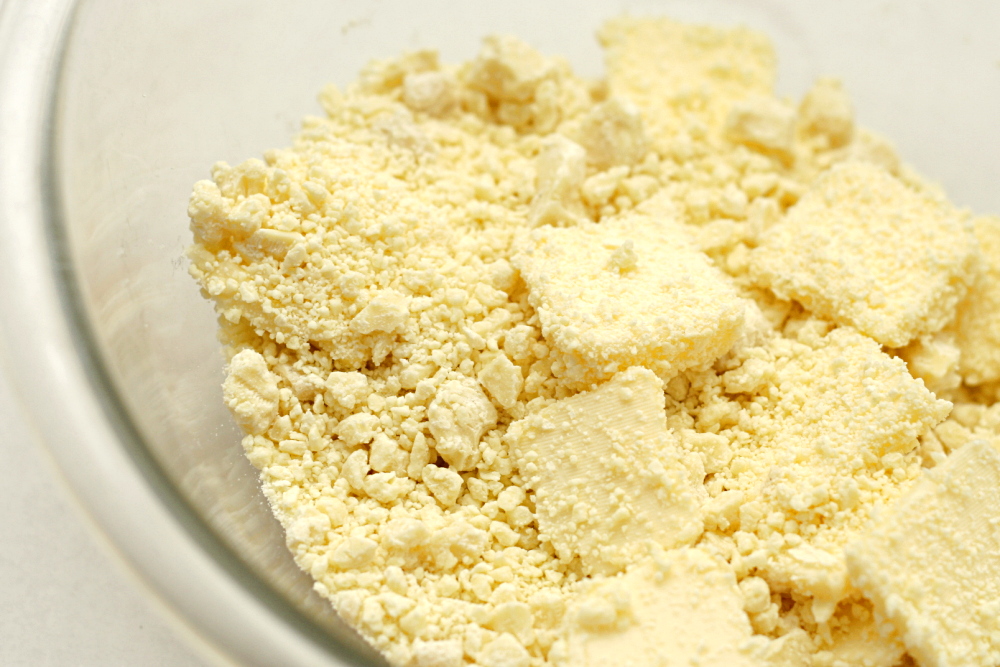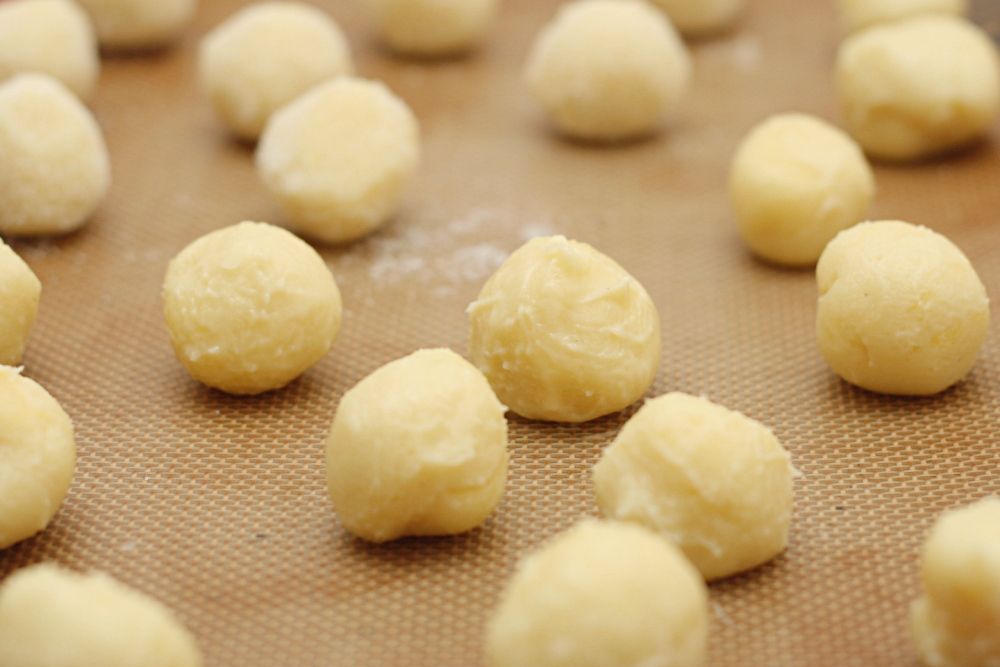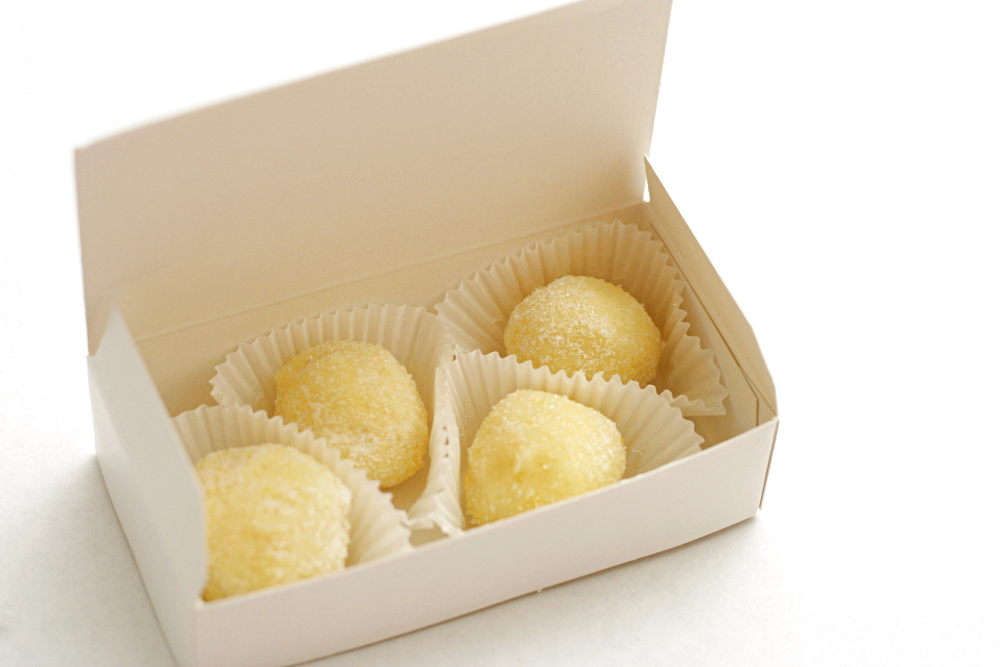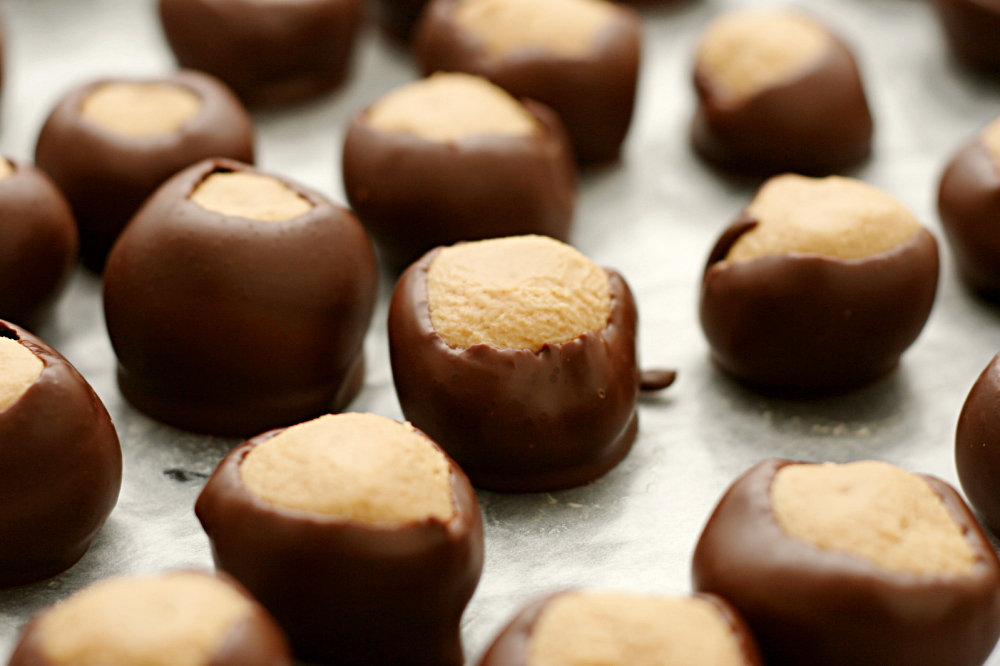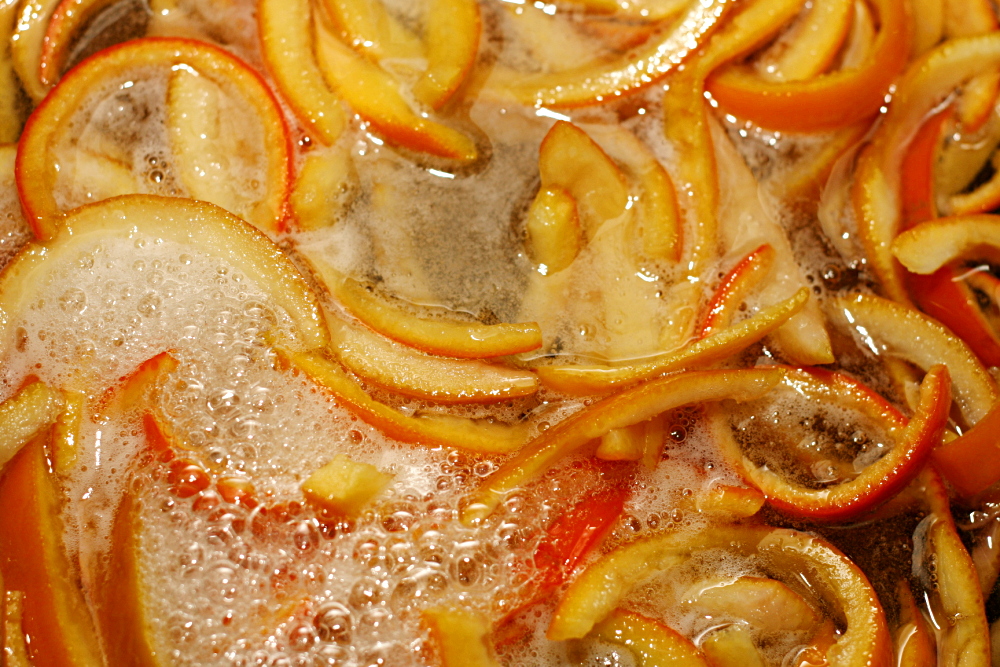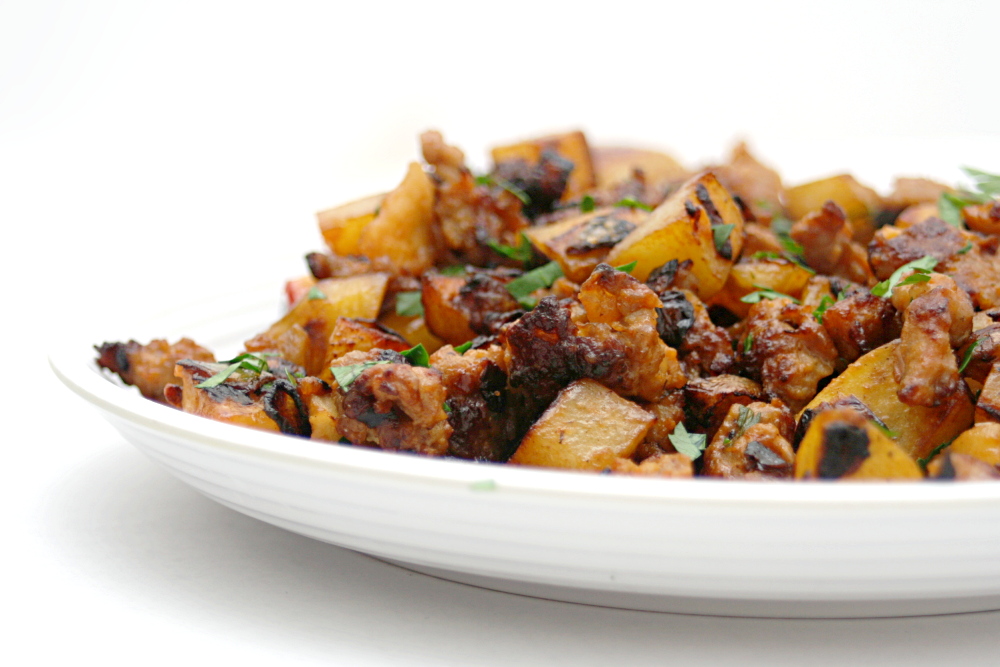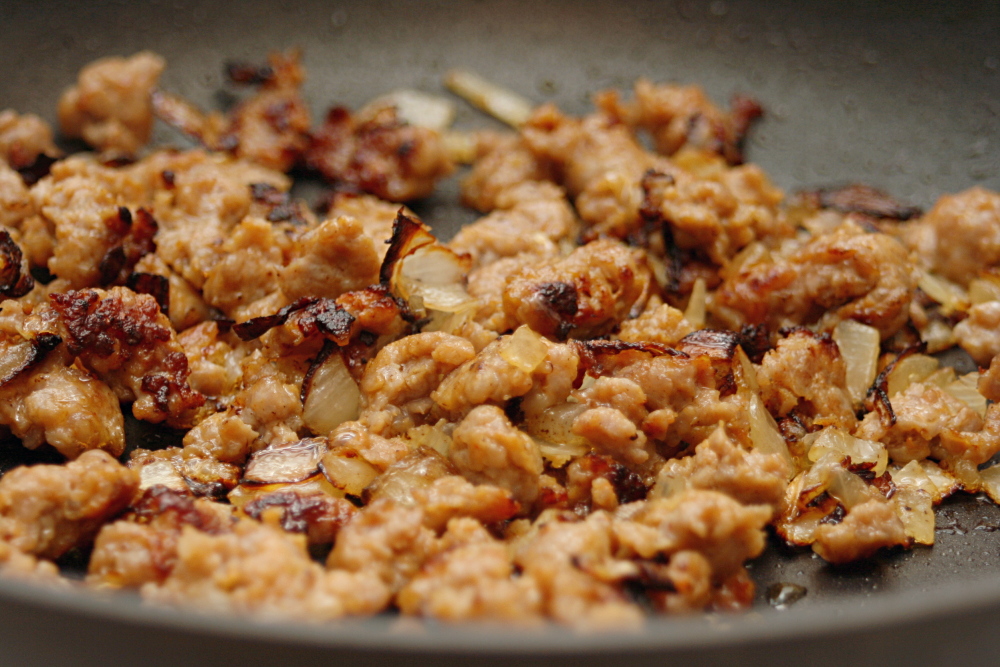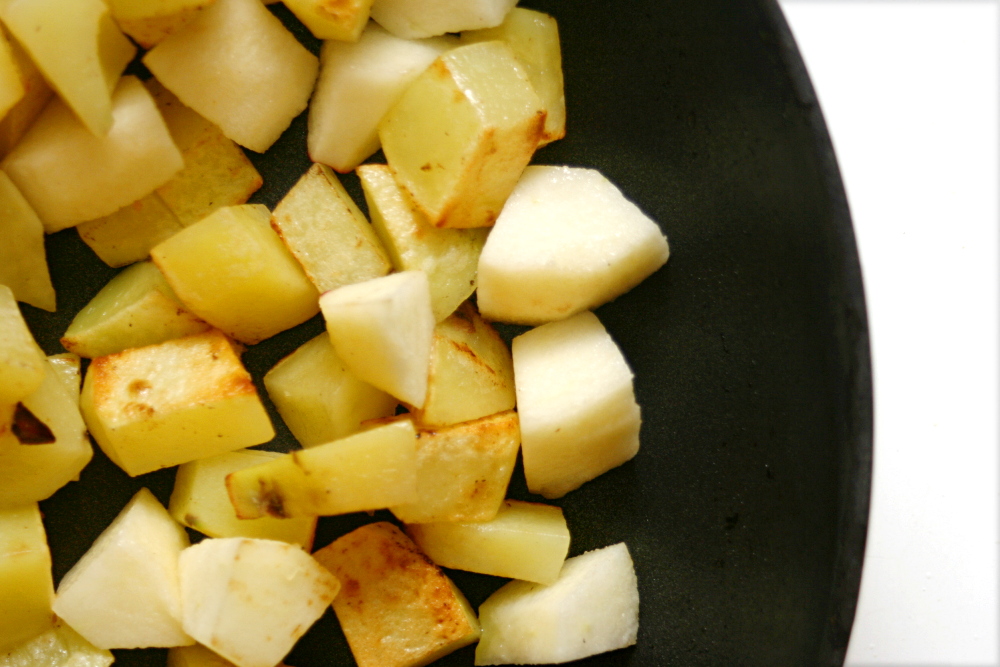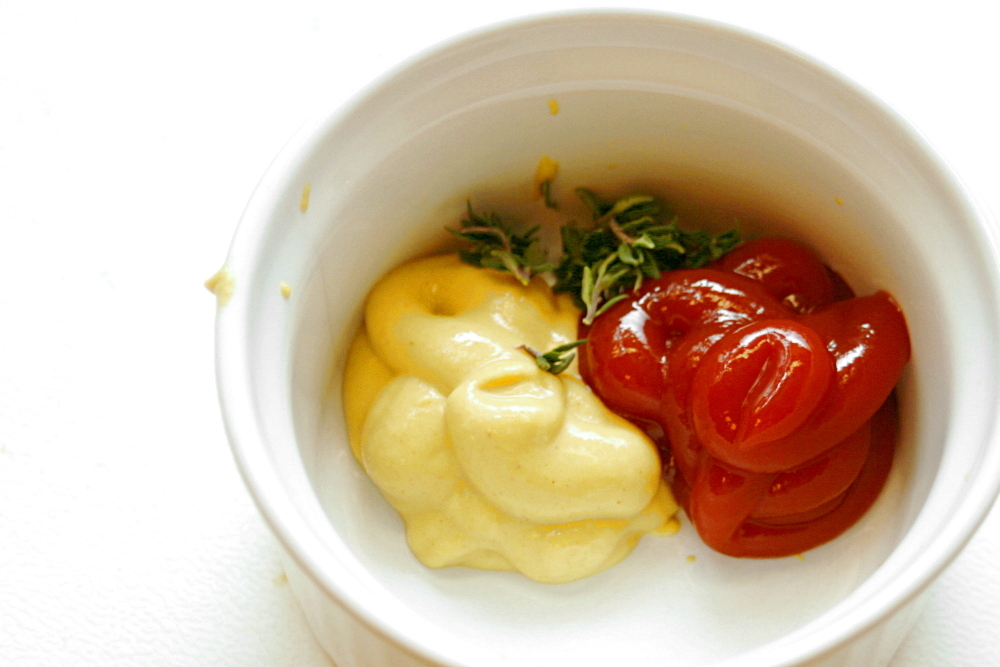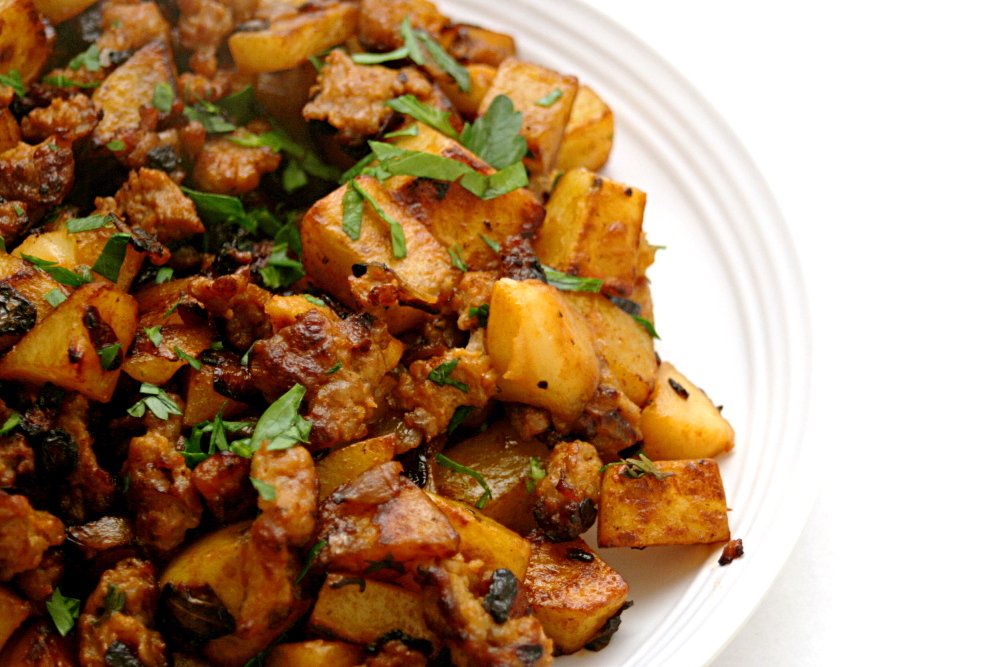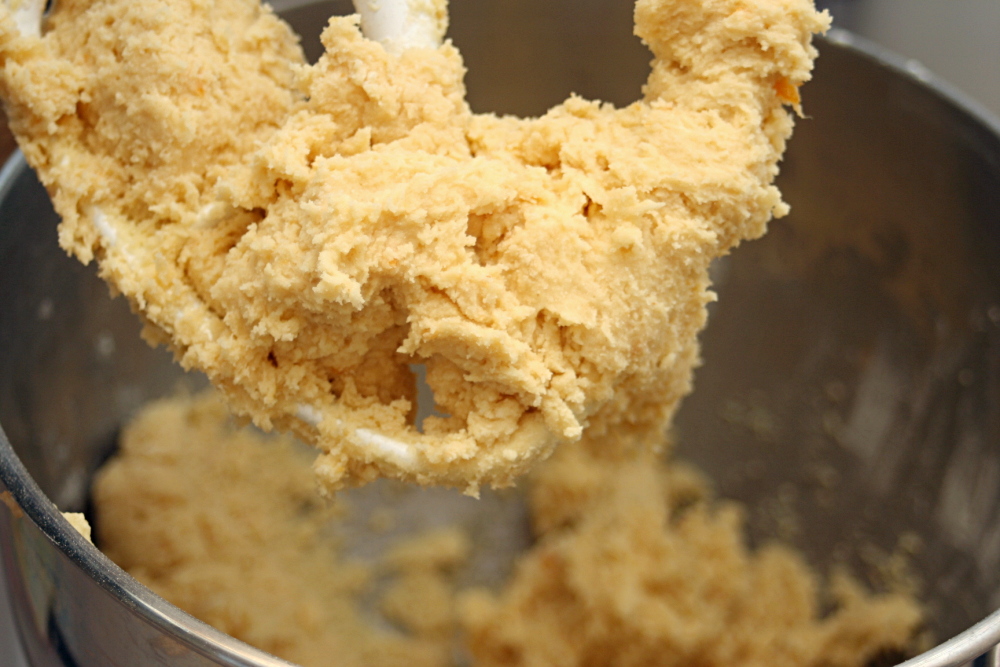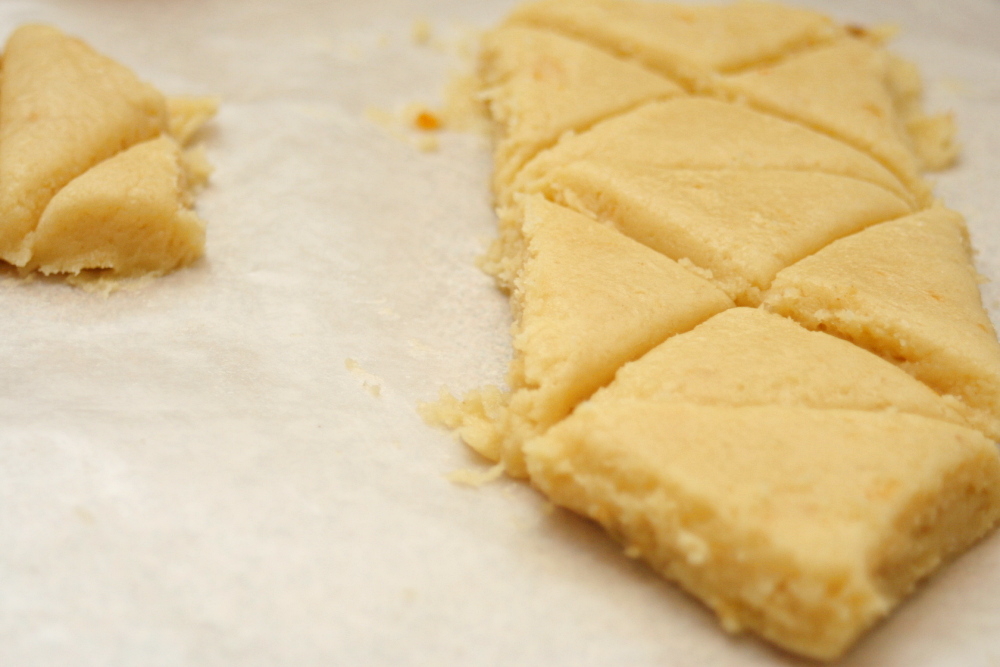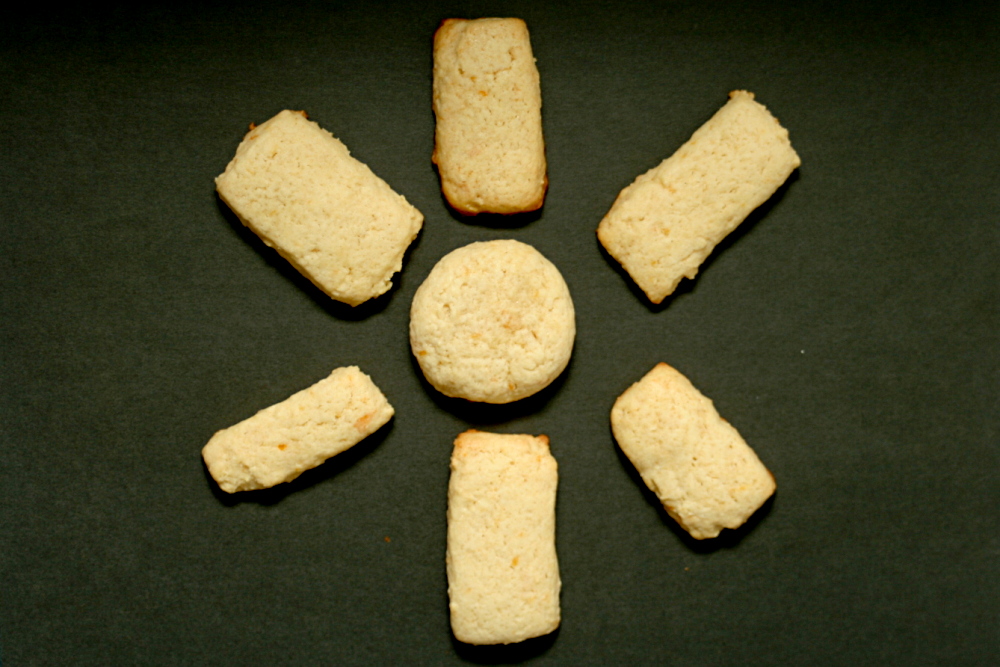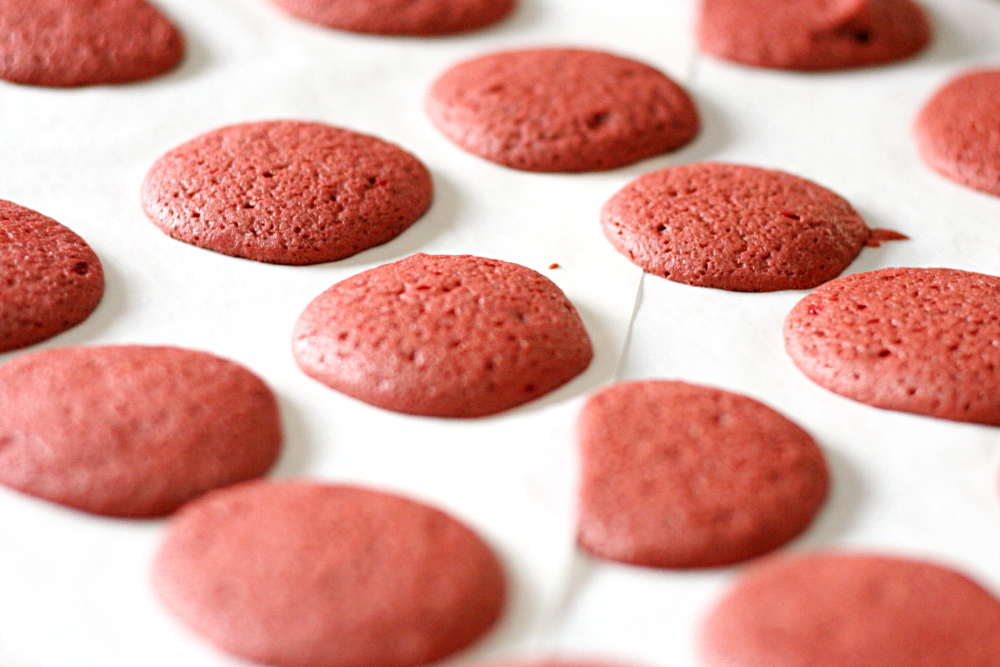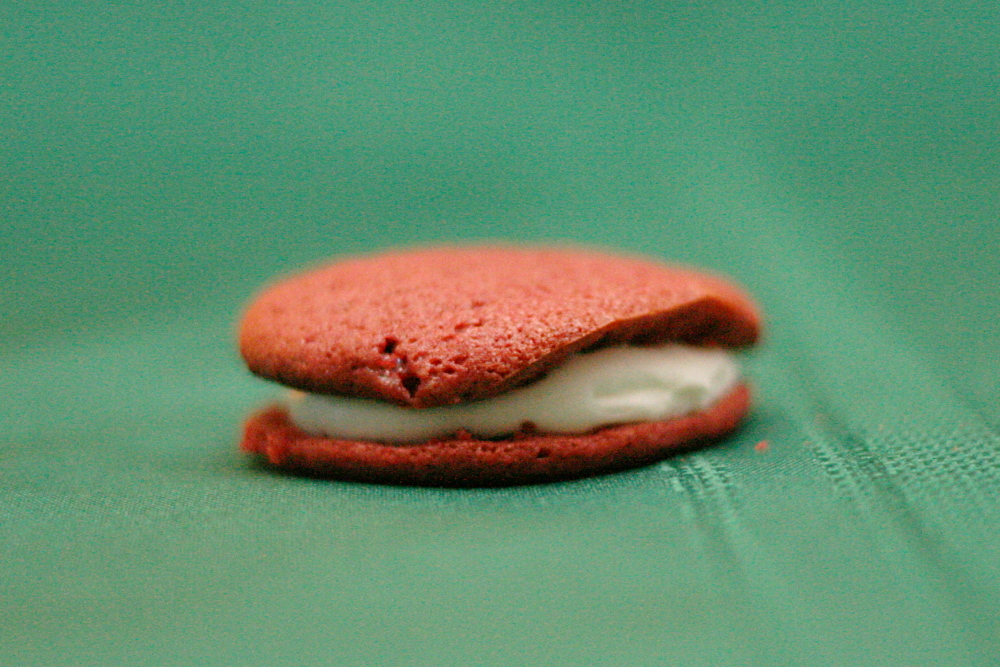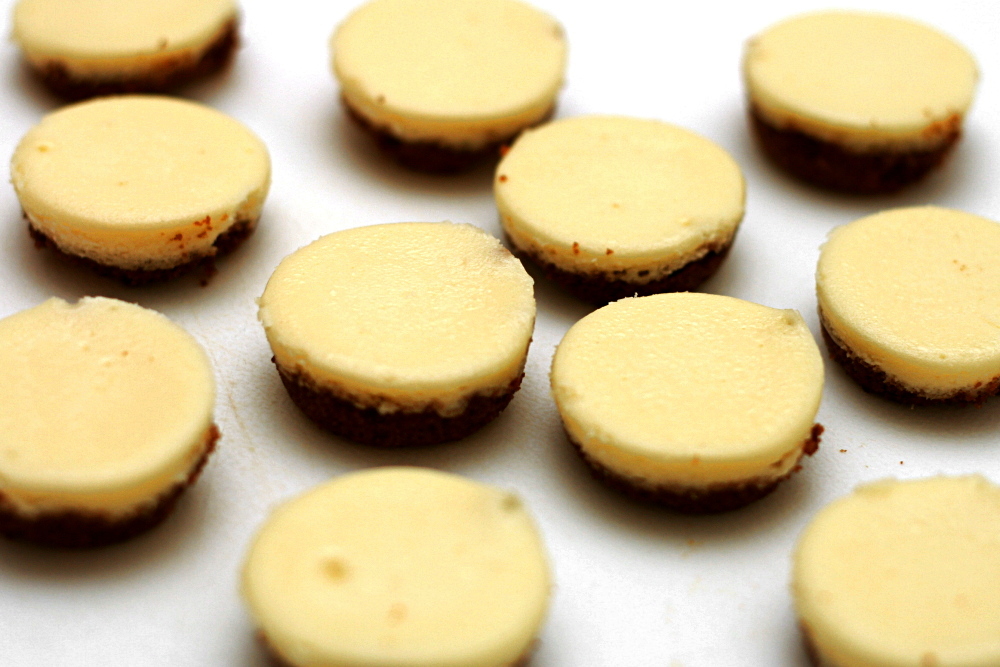
Due to an email mishap, I found out that I was going to get a mini muffin pan for Christmas a few weeks early. It was great; I had lots of time to get excited about it and think about exactly what I wanted its first use to be. Bite-sized cheesecake!

By the way, bite-sized cheesecake is a very bad idea. Even though post-Christmas detox is otherwise on in full force, I was hopeless in the face of these tiny cheesecakes. I ate one to make sure they were cooked through, then one when they had cooled a bit to make sure the consistency was right, then two that broke when I took them out of the pan, then one when I was taking the pictures, and one more after adding the strawberry sauce. Then two for dessert. <burp>
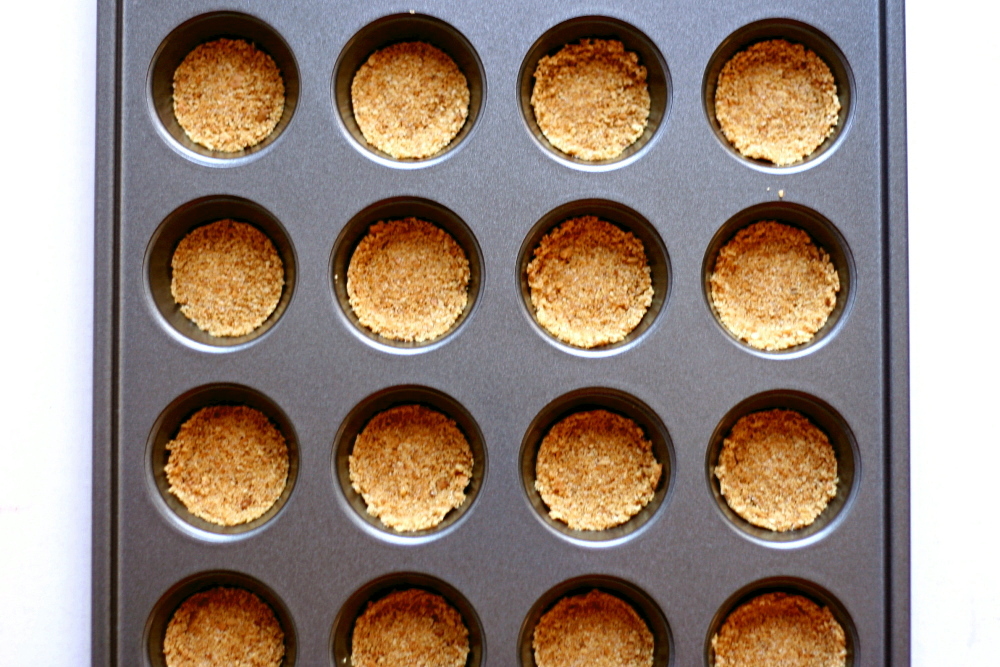
One thing I really like about Dorie’s cheesecake recipes is her initial step of beating the cream cheese alone, before even the sugar is added. What a great way to ensure that there are no lumps in the final batter. I’ve started doing this with all cheesecakes.
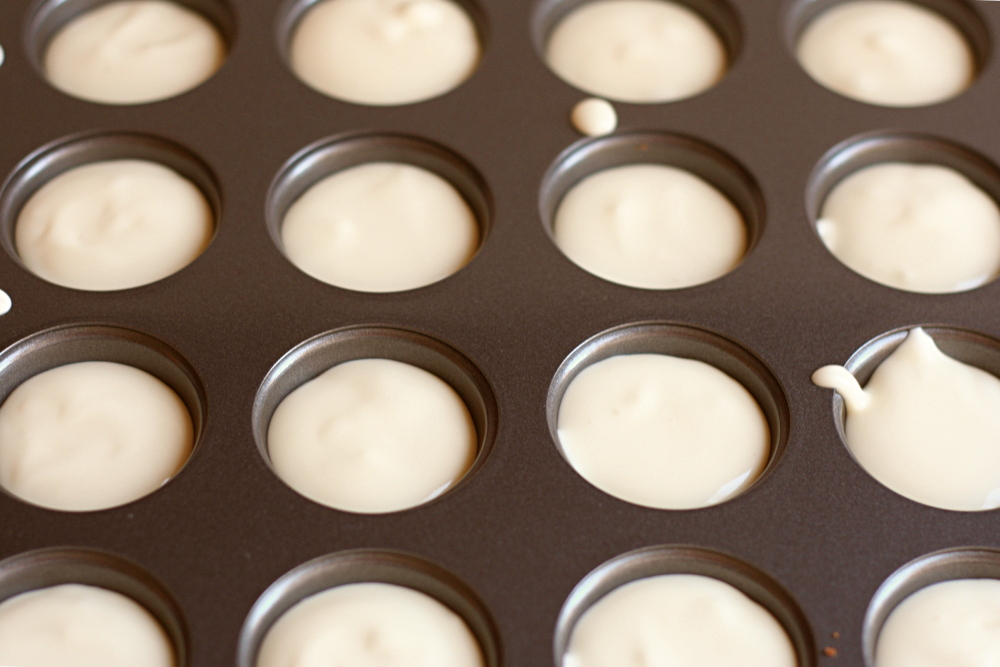
The recipe calls for either heavy cream or sour cream to be added to the batter. I used sour cream. I’m far from an expert, but in my experience, heavy cream dulls and dilutes the cream cheese flavor, while sour cream enhances it.
The cheesecake was really really good (obviously, if my uncontrollable snacking is any indicator). It seems like almost everyone in Tuesdays with Dorie loved it. The texture was kind of light and fluffy, which I liked, and the taste was spot on – the cream cheese flavor is balanced nicely between tart and sweet.
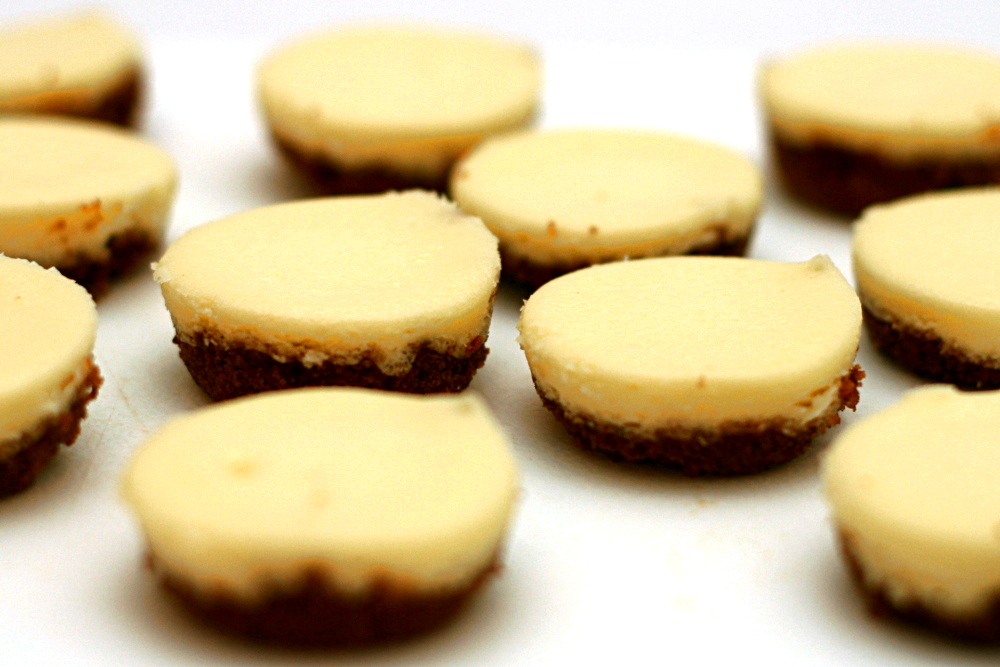
The recipe is posted on Anne’s website. For the minis, I used the same amount of crust ingredients, just pressing them into the muffin cups with the bottom of a small container. I made a fourth of the recipe, and I divided the cheesecake batter among 24 mini muffin cups, but this might be a little underfilled – you could probably fit the same amount of batter into just 18 cups. I baked the cheesecakes at 300 degrees (no water bath) for about 15 minutes, until they seemed fairly set. Then I left them in the oven, turned the oven off, and propped the door open. This seemed to keep them from sinking in the middle. I found it easiest to remove the cheesecakes from the pan when they were at room temperature, although last time I tried something similar, freezing them seemed to work too. When they were chilled from the refrigerator, they clung to the pan and broke apart when I tried to remove them.
